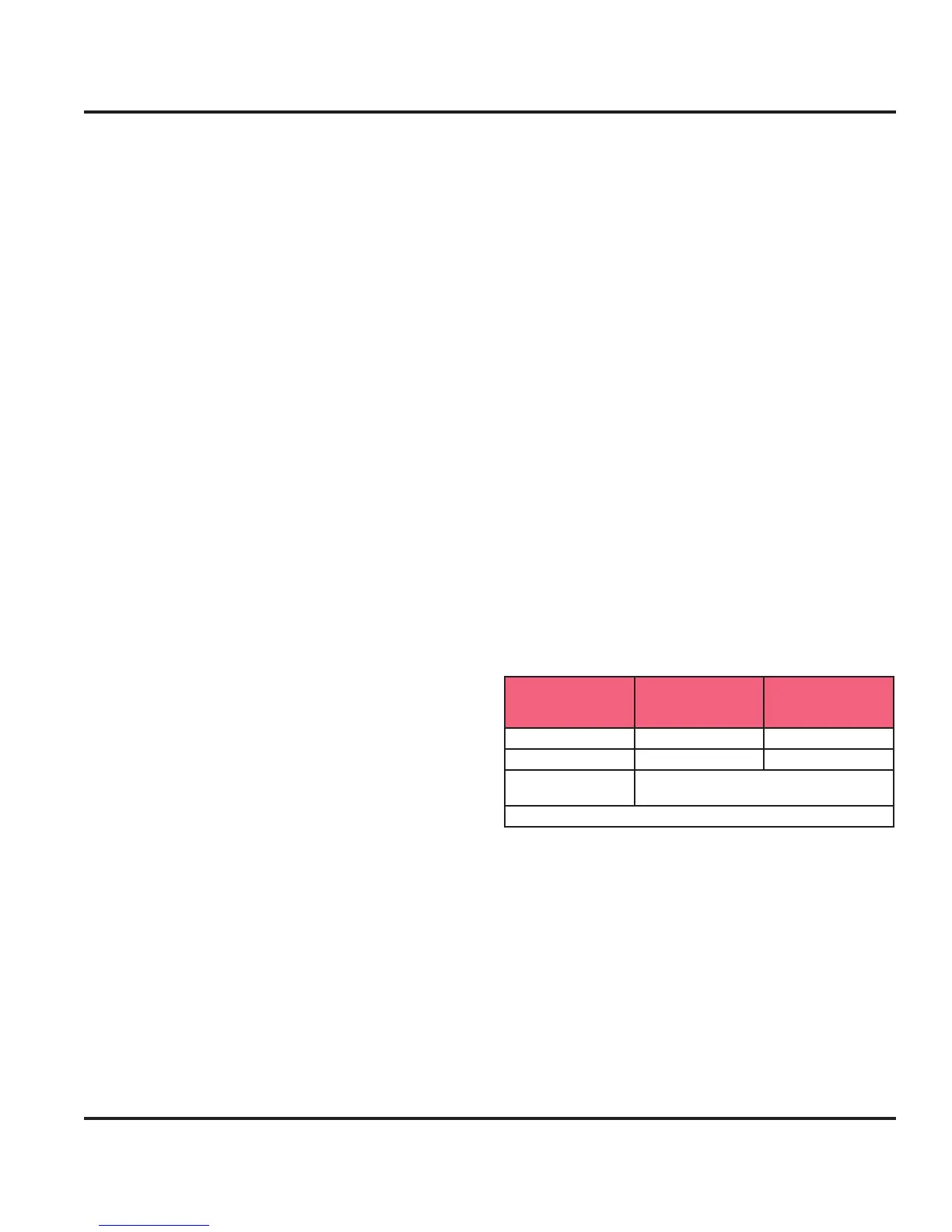In the event of a major leak, contact the appropriate
authorities.
Small quantities of spilled liquid may be allowed to evapo
-
rate. Vapor should be dispersed by effective ventilation.
5.5.5 Handling and Storage
Store and use only in equipment/containers for use with
your particular appliance. Tanks should only be stored in
a locker installed and designed for LPG storage, outside
the living areas of the boat.
Installation or added appliances should only be per
-
formed by qualified personnel.
Follow manufacturer’s instructions for changing tanks.
Ensure good ventilation.
Avoid inhalation of vapor.
When handling cylinders, wear protective footwear and
suitable gloves.
When handling cylinders (above head height) protective
headgear may be necessary.
When changing tanks, wear suitable gloves and safety
goggles or face shields.
Avoid contact with the eyes.
5.5.6 Exposure Controls / Personal Protection
Skin Protection – Wear suitable protective overalls
with long sleeves to cover exposed skin.
Eye Protection – Use chemical goggles or face shield
when changing tanks.
Hand Protection – Use impervious gloves when
changing tanks.
Use suitable protective gloves when handling cylin-
ders.
Foot Protection – Wear safety boots or shoes when
handling cylinders.
Head Protection – When handling cylinders above
head heights, protective headgear may be necessary.
•
•
•
•
•
•
5.5.8 Stability and Reactivity
Stable at ambient temperatures.
Hazardous polymerization reactions will not occur.
5.5.9 Material to Avoid
Avoid contact with strong oxidizing agents.
5.5.10 Hazardous Decomposition Products
Normally Carbon Dioxide.
Incomplete combustion will generate Carbon Monoxide.
See the Boating Safety Chapter for more information on
Carbon Monoxide.
Note: Can form explosive mixture with air.
5.5.11 Toxicological Information
Eyes: Will present a risk of serious damage to the eyes
if contact with liquid or vapor pressure jet occurs.
Skin: Will cause cold burns (frostbite) if skin contact
with liquid occurs.
Fig. 5.8 Exposure Limits
Long Term Exposure
Limit (PPM) (8 hr
TWA)
Short Term Exposure
Limit (PPM) (10 min
period)
Butane 600 750
LPG 1000 1250
Propane None Established. Considered to be an asphyxi-
ate at high concentration in air
(source: India LPG)
Inhalation: Low vapor concentrations may cause nausea,
dizziness, headaches, and drowsiness. High vapor con-
centrations may produce symptoms of oxygen deficiency
which, coupled with central nervous system depression,
may lead to rapid loss of consciousness.
ABUSE: Under normal conditions of use, the product is
not hazardous. Abuse involving deliberate inhalation of
very high concentrations of vapor, even for short periods,
can produce unconsciousness and/or result in a sudden
fatality.
Hunter e36 • Fuel Systems
5.9

